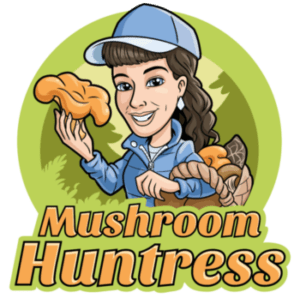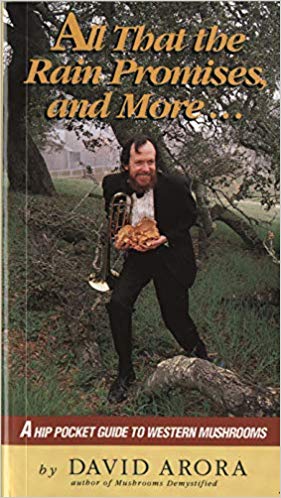The foraging bug has bitten hard, and you’re aching to get into the woods and find all the mushrooms. Welcome to the club! Mushrooms are everywhere, so this won’t be difficult. Even a stroll in the backyard can yield many mushroom types. The challenging aspect is identifying them correctly. If you would like forage for consumption, this is especially important! Luckily, there are many resources available to get you started on your mushroom foraging adventure.
Get Some Books
There are dozens of good mushroom ID books available. Look for ones that are specific to your region. There are so many types of mushrooms, and a book that encompasses them is overwhelming. Location-specific guides are the best.
Guides that include multiple pictures of each mushroom are the best. These show pictures of the cap, gills, and stem, which will help significantly during identification. Also, look for guides that discuss where to find the mushroom types, their potential edibility, and common look-a-likes.
Here is one of my favorite mushroom guides; All That the Rain Promises and More: A Hip Pocket Guide to Western Mushrooms. The book literally fits into your pocket and is somewhat weatherproof!
Find Some Clubs
Mycology (the study of mushrooms) clubs are everywhere. See if your area has a club or organization that does foraging forays or meet-ups. These groups are usually a wealth of information about what types of mushrooms are common in the area and where to find them. Some groups are lead by fungi experts, while others are a gathering of enthusiasts. The knowledge and resources of local mushroom foragers are the best.
In addition to in-person groups, there are also many groups online that focus on mushroom appreciation or identification. Many cities and towns have local mushroom Facebook groups. These should be used with some caution, especially when it comes to identification. An ID from a random Facebook user cannot be counted on as being accurate. These groups, however, do serve a purpose. They are a phenomenal place for crowd-sourcing when you’re struggling with an ID.
Focus on ID, Not Edibility
Yes, we all want to know which ones we can eat. However, when the focus is entirely on edibility, mistakes are often made. Identifying the ones you can’t eat is just as important as identifying the ones you can. This way, you learn the subtle differences between types, growth patterns, and environmental preferences.
Also, the fungi kingdom is so much more than just edible specimens. Some of the most interesting mushrooms are toxic ones. Don’t dismiss them just because they aren’t edible. They are beautiful and wondrous in their own right. A true mushroom forager studies all types, learn their habitats, and is a better forager for it.
Learn How To ID
Spore prints, cap shape, and gill attachment are a few of the many ways to correctly identifying a mushroom. Caps can be convex, conical, flat, bell-shaped, or funnel-shaped. Gills types include attached, free, decurrent, and adnate. Bolete and Polypore mushrooms don’t have gills, but instead, have spores. Hedgehog mushrooms have teeth, or spines, instead of gills. Learning the difference between all these helps infinitely in identification.
Mushroom identification guides will detail these differences and explain how to do a spore print (it’s easy!).
Go Slow
There are literally hundreds of thousands of mushroom species. Start slow, start small. Look around your yard or woods. What mushrooms do you see? Identify these mushrooms first. Practice identification skills and learn how to use your books and guides. Then, focus on a few specific types that you find interesting. If you’d like to learn how to forage morels, study their characteristics, their growth patterns, and their common locations. After you’ve got morels down, move on to the next one.
Happy foraging! We hope to see you out in the woods sometime soon! And remember, never ever ever consume a mushroom that you are unsure about. Look-a-likes abound in the fungi world, and one mistake can lead to a bad situation. Be safe, first and foremost!




